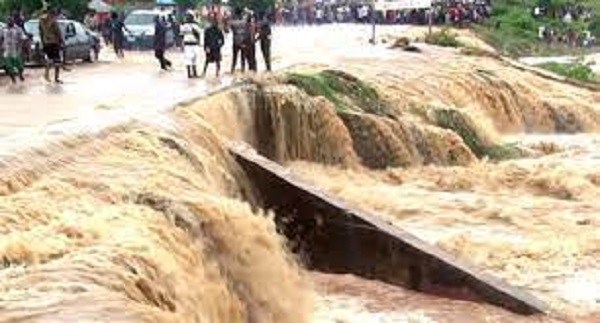Lagdo Dam release: It’s crucial we have contingency plans to manage flood disasters – expert
Aug. 28, 2023
The Nigerian government and its sub-nationals have been urged to put in place contingency plans to forestall possible flooding in the coming weeks.
The President of Environment Protection and Climate Change Experts, Mr. Akugbe Iyamu, made this call on Monday following a report that the Cameroonian government was set to release excess water from Lagdo dam.
Every year, neighboring Cameroon, which runs along the length of Nigeria’s eastern border releases water from a dam in northern Cameroon, causing flooding downstream in Nigeria.
At the time of the dam’s construction in the 1980s, the two countries agreed that a twin dam would be constructed on the Nigerian side to contain the overflow, but the second one was never realised.
The effect of the release of water from this dam is largely felt on surrounding regions in about 13 states in Nigeria, namely; Kogi, Benue, Adamawa, Bauchi, Borno, Gombe, Taraba, and Yobe.
Others include Niger, Nasarawa, Kebbi, Kogi, Edo, Delta, Anambra, Cross River, Rivers, and Bayelsa States.
Iyamu said having a contingency plan in place would help stakeholders prepare and respond effectively, so as to manage flood risks, saying it may cause displacement, and affect food security.
According to him, water that will be released from the dam may contribute more than 40 per cent to Nigeria, calling on states in the downstream areas to take actions to prevent flood disaster.
Prof. Joseph Utsev, the Minister of Water Resources and Sanitation, had said there was no immediate threat of flooding, calling on the states to put measures in place to prevent flood emergencies.
Utsev said the Nigeria Hydrological Services Agency (NIHSA) had observed an increase in the volume of flow along the River Benue system, registering a flow level of 8.97 meters today.
This, he said, was insignificant compared to a flow level of 8.80 meters on the same date in 2022.
NAN also recalls that the Ministry of Foreign Affairs had alerted the National Emergency Management Agency (NEMA) of the likelihood of flooding along the River Benue basin.
A letter signed by the Ministry’s Director of African Affairs, Umar Salisu, dated August 21, reads “the Cameroonian government plans to “open the flood gates of the Lagdo Dam on the Benue River in days ahead.”
It said that this was due to the heavy rainfall “around the dam catchment area in Northern Cameroon”.
According to the letter, when the release of water becomes necessary, the authorities of the Lagdo Dam will be releasing only modulated variable small amounts of water at a time.
This was in order to mitigate and avoid damages that the released water may cause along the River Benue basin in both Cameroon and Nigeria.
Data from NEMA revealed that the 2022 floods had displaced more than 1.4 million people, killed over 603 people, and injured more than 2,400 persons.
About 82,035 houses had been damaged, and 332,327 hectares of land had also been affected. (NAN)







